|
In the past two parts of “Guns in America”, I examined the constitutionality of private gun ownership, and the influence of the National Rifle Association on gun control legislation. In this blog I will review gun control legislation over the history of our country and where we stand on the issue today. In the first part of this blog series, I explained how recent Supreme Court rulings clearly state that government at the local, state, and federal levels does not have the authority to take away a right granted by the Second Amendment. Specifically, the right to keep and bear arms. But these same court decisions stated that the right to bear arms is subject to regulations. There have been several federal laws throughout the history of our country which put restrictions on firearms. Here is a chronological list of the major gun regulation laws in the United States: 1927 Nonmailable Firearms Act of 1927: https://www.loc.gov/law/help/statutes-at-large/69th-congress/session-2/c69s2ch75.pdf. This law made it illegal to use the U.S. mail to ship pistols, revolvers, and other firearms “capable of being concealed on the person”. Exceptions were made for the military and police. 1934 National Firearms Act (NFA): https://www.loc.gov/law/help/statutes-at-large/73rd-congress/session-2/c73s2ch757.pdf. Passed on June 26, 1934, this was the first national gun control legislation. The NFA was enacted to curtail gangland violence of the era, such as the St. Valentine’s Day Massacre. The law established a category of guns and devices which required registration, and were highly taxed to limit their manufacture, transport and sale. This new category included machine guns, short-barreled rifles, short-barreled shotguns, silencers, and concealable weapons other than pistols and revolvers. This legislation was supported by the NRA. 1938 Federal Firearms Act of 1938 (FFA): https://homicide.northwestern.edu/docs_fk/homicide/laws/national_firearms_act_of_1938.pdf This law required gun manufacturers, importers, and dealers to obtain a federal firearms license. The FFA also mandated that gun sellers keep records of customers and banned sales of guns to convicted felons. This law was supported by the NRA. 1968 Gun Control Act of 1968 (GCA): https://www.govinfo.gov/content/pkg/STATUTE-82/pdf/STATUTE-82-Pg1213-2.pdf. The GCA was enacted in response to the assassinations of President Kennedy, Martin Luther King Jr., and Senator Robert Kennedy. It repealed and replaced the FFA and updated the NFA. The law banned the importation of certain guns, imposed a minimum age of 21 to purchase a handgun, prohibited felons and the mentally ill from purchasing guns, required all manufactured or imported guns to have a serial number, and put tighter restrictions on the firearms industry. The GCA prohibits interstate firearms transfers except by manufacturers, dealers and importers licensed under the act. The provisions of this law were to be enforced by the Bureau of Alcohol, Tobacco, and Firearms Division (ATF) of the IRS. The GCA was mostly opposed by the NRA except for the provision preventing felons and the mentally ill from owning guns. 1972 The ATF was established as an independent bureau within the Department of the Treasury. It was no longer under the purview of the IRS. 1986 Firearm Owners’ Protection Act: https://www.govinfo.gov/content/pkg/STATUTE-100/pdf/STATUTE-100-Pg449.pdf. The NRA influenced the writing of this bill and pushed for its passage. The law mostly enacted protections for gun owners, but it did expand the definition of “silencer” to include parts intended to make silencers. It limited ATF inspections of gun sellers to once a year, loosened regulations on the sale and transfer of ammunition, prohibited the government from establishing a national registry of gun owners, and permitted gun dealers, importers and manufacturers to do business at temporary locations, such as gun shows. 1993 Brady Handgun Violence Prevention Act: https://www.congress.gov/103/bills/hr1025/BILLS-103hr1025enr.pdf. Also known as the “Brady Bill”, it was signed into law in November of 1993 despite fierce opposition from the NRA. It was named after James Brady who was shot and seriously wounded during an assassination attempt on President Ronald Reagan. The Brady Bill established the “National Instant Criminal Background Check System”, and requires that background checks be completed before a gun is purchased from a licensed dealer, manufacturer or importer. 1994 Violent Crime Control and Law Enforcement Act of 1994: https://www.govinfo.gov/content/pkg/BILLS-103hr3355enr/pdf/BILLS-103hr3355enr.pdf. This is the largest crime bill in the history of the United States. The most significant section for our discussion is Title XI, Subtitle A on assault weapons. This section of the law banned the manufacture, transfer or possession of nineteen specific semi-automatic firearms classified as “assault weapons”, as well as any semi-automatic rifle, pistol or shotgun capable of accepting a detachable magazine that has two or more features characteristic of such weapons. These features included telescoping or folding stocks, pistol grips, flash suppressors, grenade launchers, and bayonet lags. The Brady Bill also banned possession of newly manufactured magazines capable of holding more than ten rounds of ammunition. The law did not ban lawfully possessed assault weapons manufactured prior to the enactment of the law. As you might expect, the Brady Bill was loudly opposed by the NRA. Due to a sunset clause in the bill, the assault weapons ban expired on September 13, 2004, and has not been renewed. 2002 Homeland Security Act of 2002: https://www.dhs.gov/homeland-security-act-2002. Among many other things, this law shifted the ATF from the Department of the Treasury to the Department of Justice. The agency’s name was changed to the “Bureau of Alcohol, Tobacco, Firearms and Explosives”, but it is still referred to as the “ATF”. 2003 Tiahrt Amendments: https://giffords.org/lawcenter/gun-laws/policy-areas/other-laws-policies/tiahrt-amendments/. These are provisions attached to the U.S. Department of Justice appropriations bills every year since 2003. These amendments accomplish the following:
2004 Assault Weapons Ban: Expired on September 13, 2004. 2005 Protection of Lawful Commerce in Arms Act: https://www.congress.gov/109/plaws/publ92/PLAW-109publ92.pdf. This NRA supported law prohibits gun and ammunition manufacturers, distributors, dealers, and importers from being named in federal or state civil lawsuits when crimes are committed involving their firearms. 2013 Assault Weapons Ban of 2013: https://www.congress.gov/bill/113th-congress/senate-bill/150. This bill was introduced by Senator Dianne Feinstein (D-California) one month after the Sandy Hook Elementary School Shooting, https://www.history.com/this-day-in-history/gunman-kills-students-and-adults-at-newtown-connecticut-elementary-school. With the help of the NRA, the bill was defeated in the Senate by a vote of 40-60. It was the last piece of gun control legislation to be voted on in the Senate. New Push for Gun Control: 2021 brought a new Democrat Administration to the White House, and a flood of gun violence to the streets of America. As I wrote in Part 2 of “Guns in America”, President Biden is coming under increasing pressure from his party to do something about gun violence. But short of fine-tuning existing laws through executive actions, there isn’t much that he can do without Congress. The Biden Administration is focused on infrastructure spending, green initiatives, border issues, the COVID-19 pandemic, and now his recently announced American Families Plan. With all this on the table President Biden doesn’t appear to be willing to spend any of the little political capital he has remaining on any gun control measures. With a very slim Democrat majority in both Houses of Congress, gun control legislation cannot move forward without Republican support. The House passed the following two pieces of gun legislation in March:
Both of these bills were passed by the House of Representatives and are common-sense measures. The existing federal laws leave dangerous loopholes in existing background check requirements, and these two bills would close the loopholes. Senate Majority Leader Chuck Shummer said that the bills will be voted on in the Senate. It will be an uphill battle to secure the 60 votes needed to pass either of these bills, but there is a chance. The NRA is no longer the feared institution that it once was, and universal background checks are favored by the majority of Americans. Hopefully we won’t have to wait long for a Senate vote. Any movement by the Congress to prevent guns from getting into the wrong hands will be an important step in breaking the logjam of inaction. In Part 4 of “Guns in America”, I will discuss what can be done about all the gun violence, and see if there are any common-sense approaches that should be considered.
If you enjoy reading this type of commentary please subscribe to my blog and tell a friend. You will receive an email notification when new blogs are posted. The email will come from the site’s email: [email protected]. Thanks, Armchair American
0 Comments
Leave a Reply. |
AuthorThe Armchair American. Archives
November 2024
Categories
All
|


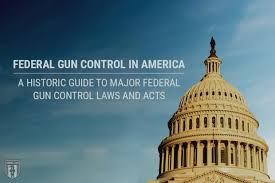




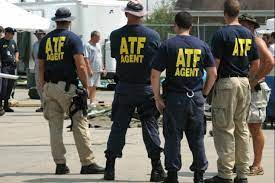

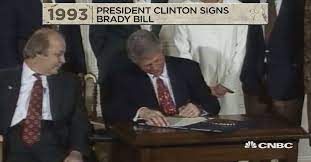
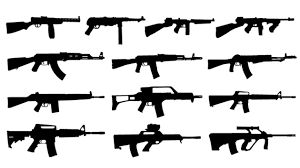



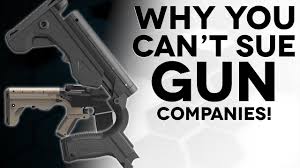
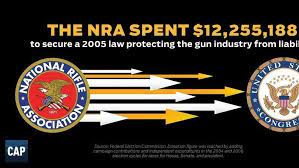





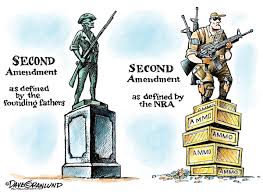

 RSS Feed
RSS Feed